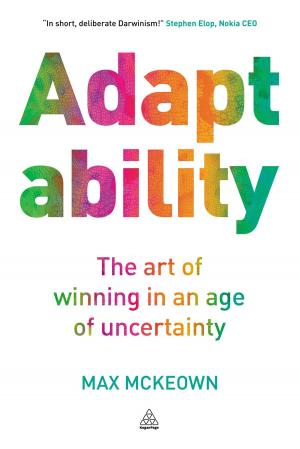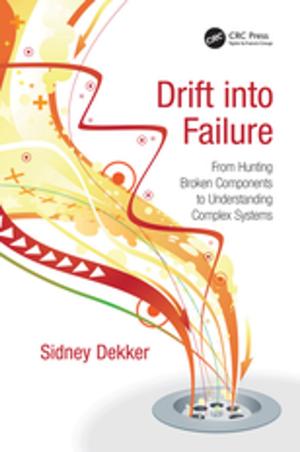Sixteen Types in Eight Team Roles
Nonfiction, Health & Well Being, Psychology, Occupational & Industrial Psychology| Author: | Preben Grønkjær | ISBN: | 9781311812124 |
| Publisher: | Preben Grønkjær | Publication: | February 1, 2016 |
| Imprint: | Smashwords Edition | Language: | English |
| Author: | Preben Grønkjær |
| ISBN: | 9781311812124 |
| Publisher: | Preben Grønkjær |
| Publication: | February 1, 2016 |
| Imprint: | Smashwords Edition |
| Language: | English |
This book presents a model of eight team roles preferred by different psychological types when solving tasks. It is suitable primarily for dialogues on how individual members of a group can complement each other, but it may also be used to reflect on your own work performance.
The use of the book requires that its readers be familiar with the concepts in Carl Gustav Jung’s type theory and have identified their own most appropriate type profile. The latter is achieved typically by answering a questionnaire, such as Myers-Briggs Type Indicator (MBTI) or Jungian Type Index (JTI), followed by feedback from a licensed consultant. It is also possible to find type indicators for free on the Web.
The descriptions of the team roles are relevant for any type of work including, for example, industrial production and public services, research and study projects, nursing and medical treatment, management and consultancy, and artistic and other creative processes.
The model is based on the fact that people are different and on how they typically differ from each other. The variances include the kinds of team roles each of the types prefers. However, any task solution requires a number of necessary actions and positions, so you can also use the concept for reflections on your own effort in groups. Whether you work alone or in a group, it is advantageous to think about which aspects of the work process come easier and which ones require you to pull yourself together to perform.
The mentioned eight roles are embodied in the concept of Teamkompasset (The Team Compass) that the Center for Leadership (CfL) in Copenhagen has registered as a trademark. CfL has kindly given me permission to use this model. Even though the model is developed in a Danish context, it can be used when reflecting on work processes wherever they are performed.
The model with the eight roles in this book is not a universal, final, or scientifically proven truth. It has developed over the years in Denmark from observations of problem solving in groups using C.G. Jung’s type theory as it is implemented in the Myers-Briggs Type Indicator’s 16 type profiles, which are used by a number of other type-assessment tools.
In the chapter “The Eight Team Roles,” there is a very brief description of how the typological preferences manifest themselves in different approaches to performing these roles. This topic will be elaborated subsequently in the section “The 16 Type Profiles in Team Roles.” All descriptions in this book are, however, kept as concise as possible, as it is intended to be a practical aid in working with the development of groups.
Since both typology and the model of the eight team roles are based on preferences, these concepts cannot be used directly as tools for recruiting employees to carry out certain functions because doing a job is mainly a question about skills. Insights in a person’s preferences certainly cannot help predict how he or she will act in a particular situation. Still, they can be used advantageously as elements in a dialogue about the job functions to be covered in the team.
Using the hypotheses of typology and the eight team roles is not a question of labeling people, putting them in a pigeonhole, or locking them in particular roles with specific duties in perpetuity. Rather, it is a question of having a starting point from which to raise awareness. It might even lead to the insight that you already are compartmentalized in a certain typological profile and in definite team roles. Understanding this may give you the freedom to change or differentiate your attitude and behavior.
This book presents a model of eight team roles preferred by different psychological types when solving tasks. It is suitable primarily for dialogues on how individual members of a group can complement each other, but it may also be used to reflect on your own work performance.
The use of the book requires that its readers be familiar with the concepts in Carl Gustav Jung’s type theory and have identified their own most appropriate type profile. The latter is achieved typically by answering a questionnaire, such as Myers-Briggs Type Indicator (MBTI) or Jungian Type Index (JTI), followed by feedback from a licensed consultant. It is also possible to find type indicators for free on the Web.
The descriptions of the team roles are relevant for any type of work including, for example, industrial production and public services, research and study projects, nursing and medical treatment, management and consultancy, and artistic and other creative processes.
The model is based on the fact that people are different and on how they typically differ from each other. The variances include the kinds of team roles each of the types prefers. However, any task solution requires a number of necessary actions and positions, so you can also use the concept for reflections on your own effort in groups. Whether you work alone or in a group, it is advantageous to think about which aspects of the work process come easier and which ones require you to pull yourself together to perform.
The mentioned eight roles are embodied in the concept of Teamkompasset (The Team Compass) that the Center for Leadership (CfL) in Copenhagen has registered as a trademark. CfL has kindly given me permission to use this model. Even though the model is developed in a Danish context, it can be used when reflecting on work processes wherever they are performed.
The model with the eight roles in this book is not a universal, final, or scientifically proven truth. It has developed over the years in Denmark from observations of problem solving in groups using C.G. Jung’s type theory as it is implemented in the Myers-Briggs Type Indicator’s 16 type profiles, which are used by a number of other type-assessment tools.
In the chapter “The Eight Team Roles,” there is a very brief description of how the typological preferences manifest themselves in different approaches to performing these roles. This topic will be elaborated subsequently in the section “The 16 Type Profiles in Team Roles.” All descriptions in this book are, however, kept as concise as possible, as it is intended to be a practical aid in working with the development of groups.
Since both typology and the model of the eight team roles are based on preferences, these concepts cannot be used directly as tools for recruiting employees to carry out certain functions because doing a job is mainly a question about skills. Insights in a person’s preferences certainly cannot help predict how he or she will act in a particular situation. Still, they can be used advantageously as elements in a dialogue about the job functions to be covered in the team.
Using the hypotheses of typology and the eight team roles is not a question of labeling people, putting them in a pigeonhole, or locking them in particular roles with specific duties in perpetuity. Rather, it is a question of having a starting point from which to raise awareness. It might even lead to the insight that you already are compartmentalized in a certain typological profile and in definite team roles. Understanding this may give you the freedom to change or differentiate your attitude and behavior.















